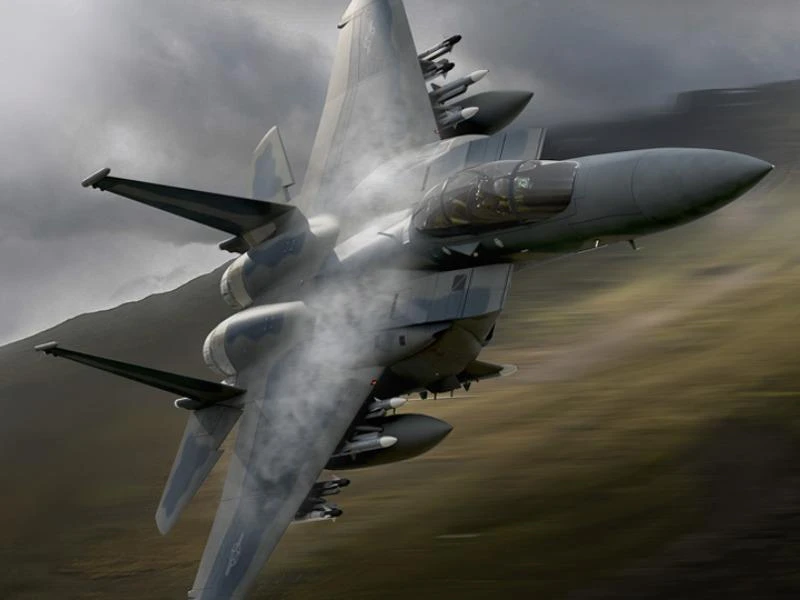The F-15EX, the latest variant of the iconic F-15 family, represents a significant leap in the evolution of the F-15 fighter aircraft series. However, while it incorporates many modern features and technologies, it also faces notable challenges, particularly in the context of the fifth-generation fighter aircraft that prioritize stealth and advanced capabilities. This article explores the strengths and weaknesses of the F-15EX, focusing on its limitations in weapon load, mobility, speed, and operational costs.

Evolution and Advancements
The F-15EX is an upgraded version of the F-15E Strike Eagle, designed to address the needs of contemporary air combat while maintaining the core strengths of its predecessors. Introduced as part of the U.S. Air Force’s modernization efforts, the F-15EX features advanced avionics, improved sensors, and enhanced survivability compared to earlier F-15 models. It boasts a modernized cockpit, increased payload capacity, and advanced electronic warfare systems.

Weapon Load Limitations
One of the key drawbacks of the F-15EX compared to fifth-generation fighters is its relatively low weapon load capacity. While the F-15EX can carry a substantial array of munitions, including air-to-air missiles, precision-guided bombs, and external fuel tanks, its weapon load is limited by its design and structure. Fifth-generation fighters like the F-35 and F-22 have an advantage in internal weapon bays, which contribute to their stealth profile and reduced radar cross-section. In contrast, the F-15EX’s external weapon stations are more exposed, which can impact its stealth and survivability in contested environments.

Mobility and Speed
The F-15EX, while highly capable in terms of speed and agility, does not match the maneuverability and advanced flight dynamics of fifth-generation fighters. Its design, while optimized for speed and thrust, does not offer the same level of agility and advanced maneuvering capabilities as aircraft like the F-22 Raptor or the Su-35. The F-15EX’s thrust-to-weight ratio and aerodynamic design provide impressive performance, but its older airframe and control systems may not be as adept at executing the advanced maneuvers and evasive tactics employed by newer fighters.
Stealth and Radar Cross-Section
Stealth is a defining feature of fifth-generation fighters, and this is where the F-15EX faces a notable disadvantage. While the F-15EX incorporates some modern design elements to reduce its radar cross-section, it lacks the extensive stealth features found in aircraft like the F-35. Its external weapon stations and traditional airframe design make it more detectable by enemy radar, potentially reducing its effectiveness in stealth-required operations. This limitation can impact its performance in high-threat environments where stealth is a critical factor for mission success.

Operational Costs
Operating and maintaining the F-15EX can be expensive, particularly when compared to newer, more efficient fighter aircraft. The costs associated with the F-15EX include not only the purchase price but also the expenses related to maintenance, training, and logistics. The complexity of its systems and the need for specialized support contribute to higher operational costs. In contrast, newer fifth-generation fighters may offer lower long-term costs due to advancements in technology and maintenance practices.
Strategic Considerations
Despite these limitations, the F-15EX remains a valuable asset in the U.S. Air Force’s inventory. Its advanced avionics, substantial weapon payload, and proven combat capabilities make it a formidable opponent and a versatile asset for a range of mission profiles. The F-15EX provides a complementary capability to fifth-generation fighters, offering a balance of speed, firepower, and tactical flexibility.
Conclusion
In conclusion, the F-15EX represents a significant advancement over previous F-15 variants, but it faces challenges when compared to fifth-generation fighter aircraft. Its limitations in weapon load, mobility, stealth, and operational costs highlight the trade-offs inherent in modernizing legacy platforms. While the F-15EX may not match the capabilities of the latest stealth fighters, it continues to play a crucial role in the U.S. Air Force’s air combat strategy, offering a balance of performance and versatility in an evolving aerial threat environment.





